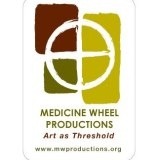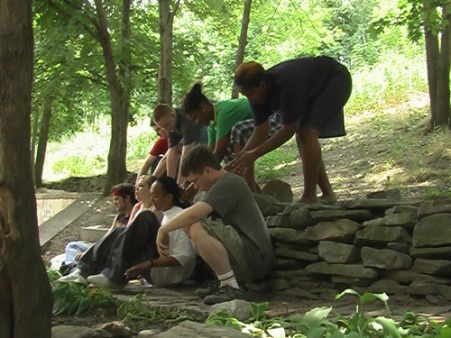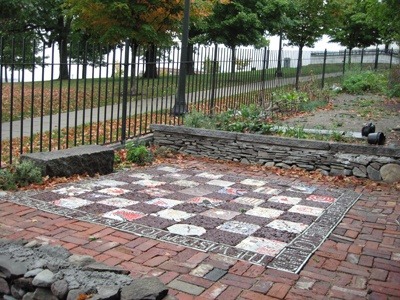Medicine Wheel Productions is dedicated, as an arts organization, to the production of site-specific public art installations, both intimate and large-scaled, that invite people to use art as threshold, gaining awareness of self, community and the human condition. It is forging a common path, beyond diversity to inclusion, building community from the inside out, using art as the threshold. Medicine Wheel Productions seeks a $3,500 grant to support its work at No Man’s Land. MWP programs here serve many South Boston/Greater Boston residents each year. No Man’s Land is a model project of MWP showing how artists can involve their communities directly in the creation of public art and is an example of impactful community building. Since 1996, MWP has led the South Boston Community in the reclamation of what was once an abandoned tract of land, known as No Man’s Land, located between South Boston High School and the National Park at Dorchester Heights. In 1996, MWP worked in collaboration with 300+ South Boston residents to clean up and reclaim this land for the community. The space has brought together diverse populations and provides the South Boston Community with an “urban wild” and a native species garden that provides all involved with outdoor education and supports the environment by expanding space for growth and the exponential effect of environmental ed for youth.Who No Man’s Land Helps and How: No Man’s Land serves residents from across South Boston, including the housing developments, to represent the entirety of South Boston and its diverse demographics to provide social, ecological, and environmental benefits. No Man’s Land benefits South Boston residents in the following ways:
- Green spaces like No Man’s Land give a sense of social place, allow one to gain social recognition, enhance feelings of community kinship and solidarity, allow one to teach and lead others, provide opportunity to reflect on personal and social values, and promote spiritual growth. These green spaces also known as the urban wild support native species, prevent errosion and provide an ongoing environmental education for youth who may not otherwise be exposed to such.
- Community Identity: No Man’s Land invites South Boston residents to an experience, which affirms a sense of place, belonging, and cohesion. Studies have found that residents living near green common spaces “had more social activities and more visitors, knew more about their neighbors, reported their neighbors were more concerned with helping and supporting one another and had stronger feelings of belonging” (Environmental News Network). This is especially important to mitigate the overwhelming effects of South Boston’s swift development and gentrification in recent years, which has given rise to a sense of dislocation and marginalization.
- Safety: A green space, like No Man’s Land, promotes a safer neighborhood. When residents have more vested interests in a place, their participation in community vigilance increases, and they will watch to make sure it’s not being misused, damaged, etc. The better maintained a residence or public space is, the safer it is going to be.
- Green spaces provide a refreshing contrast to the harsh shape, color, and texture of buildings, and stimulate the senses with their simple color, sound, smell, and motions (Dorward, 1990; Miller, 1997).
- Employment: No Man’s Land provides employment opportunities for participants in MWP’s Summer and School Year Youth Public Art Internship program.
- As social venue, a green space like No Man’s Land is used to build a sense of community and belonging all the while providing environmental benefits to an at risk area of the city and providing environmental education to the next generation, creating a strong exponential effect that allows many to learn about how to protect our open spaces and the earth overall.


